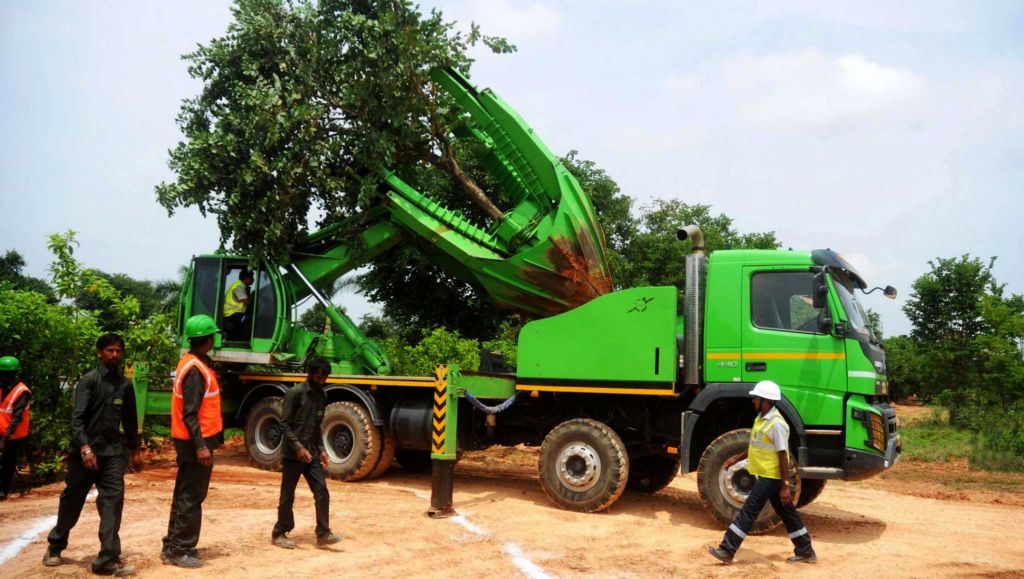Time to grow the green


Planting new saplings is a welcome move, but too little, too late. With the removal of the mature trees the carbon-di-oxide removal is lesser and affects the social, ecological environment of the region and cannot be reversed with afforestation - by planting saplings.
Need of the hour : save the existing mature trees
Environmental degradation is now a critical area of concern globally, as the pace of degradation is increasing at a rapid rate. Rampant urbanization, mining and infrastructure development are causing adverse climate changes with severe repercussions like floods and droughts. When it comes to re-planting trees and improving the green cover, there is a significant imbalance and disparity.
While the bigger and moderately mature living trees provide a wide range of benefits like air purification, release of sufficient oxygen, supporting the flora and fauna, reducing the soil erosion, helping conserve energy, reducing the UV-B sun rays impact and acting as the carbon dioxide sinks, the newly planted seedlings and very young trees while helping improve the extent of green cover are no-match in comparison to value benefits of a bigger tree. Hence for a sustainable future, it is essential to conserve trees and protect our environment.
Trees help carbon sequestration by removing carbon-dioxide from the environment and improving the quality of air. For e.g. over a period of 50 years, a peepal tree will reduce carbon-di-oxide in the atmosphere by about 7,500 kilograms.
Trees act as mini reservoirs, intercepting rain water in the branches, bark and leaves. Trees also help reduce soil erosion. Trees shelter wildlife and as they age become home to various species.
Giving a new lease of life to trees. Volvo Trucks pioneered the solution to relocate trees and make infrastructure development environmentally sustainable. Many state governments are struggling to relocate trees in the wake of massive infrastructure development in metros. The advanced Volvo Truck Tree Transplanter has already helped transplant over 3,000 trees across India.
The solution specializes in transplanting trees which are between 10 and 20 years of age and 10”-14” diameter, as the maximum amount of carbon sequestration is done by the tree at this stage. The survival rate recorded is 80 per cent.
Our total solution offer
We offer Tree Transplantation solution as two distinct business models:
The Volvo Trucks Tree Transplantation Solution is a major collaborative effort between Volvo Trucks India and Institute of Wood Science and Technology under Ministry of Environment, Forest and Climate Change, India. To meet the commitment under the Conference of Parties (CoP 21) treaty, India requires to increase its forest cover by five million hectares along with an improvement in the quality of green cover of an equal measure. But the execution is complex. “You cannot simply halt the infrastructure growth of the one of the fastest growing economy. We need to explore ways and means to ensure environment protection and development go hand-in-hand” says M Srinivasa Rao, IFS officer in government of India. This can be done by transplanting trees to a place where they can thrive. The mission statement is to save every trees by transplanting them. “With millions of trees being cut every year, we realized that we can’t do it on our own” says Ranjit Radhakrishnan, Vice President - Strategic Business, Volvo Trucks India. “Instead we have to become an aggregator and partner with organizations to enable them engage in transplantation with our support.”
The said endeavour has been appreciated by ministry of environment and climate change, Government of India. In fact, while addressing a press conference Honorable Cabinet Minister Gadkari said, “After four months from now, we will not cut trees for building roads. We will give an undertaking to the Environment Ministry. Instead we will use technology to transplant trees.”
While we have embarked with the aim of saving the environment by transplanting trees, a serendipitous connect with the community is developed wherever we pursue the activity.
IWST guides in Pre-Transplantation assessment, during transplantation and post transplantation care for better survival of transplanted trees.
Volvo Trucks Tree-Transplanter Facts
BIAL expansion leading the way to “Go Green”.
To facilitate its expansion plans for the upcoming new terminal, airport operator, Bangalore International Airport Limited (BIAL) will be translocating 7,095 shrubs and trees which fall in its path over a period of three years. Of them, 1,285 trees and plants will be translocated in the first phase.
According to an official release, “To ensure high survival rates, BIAL has engaged the Institute of Wood Science & Technology and Volvo Trucks to provide scientific solutions.” Tom Shimmin, Chief Projects Officer, said, “The objective is to avoid felling of trees and, instead, relocate them to a place where they can further improve aesthetics of the Airport. All this is to ensure that the landscape is in sync with our garden themed Terminal 2. We will transplant trees wherever there is scope to do so.” He added that the airport will be the first in India and only the third in the world to have green corridors around the runway”.
Explaining the process, Prasanna Murti Desai, who is spearheading the landscaping project for BIAL said that the 4.6 km from the Trumpet to the terminal would look aesthetically appealing when the process is completed. “The process may take a day to a week or more depending on the species and the care required. The Volvo truck tree transplanter is capable of translocating around 17 large trees each day,” it added.
It is important to sustain the environment and hence the need for a standardized transplantation solution. We have realized that a greener solution lies in technology.